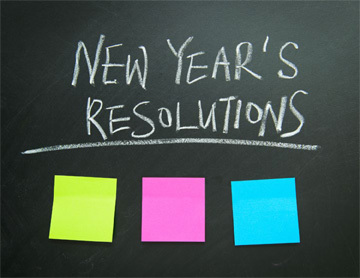"You don’t need to hold back when giving harsh and difficult feedback to an Enneagram 8, they are tough and can take it". "Give the Enneagram 4 the role of selecting the Christmas decorations because they have good aesthetics", "Don’t bother inviting the Enneagram 5 to the party, they probably won’t come anyway." -Sound familiar?
These are the kind of comments that are sometimes passed around by those who have only a superficial understanding of the Enneagram. However, with some real insight into the depth and complexity of this tool, these are soon revealed to be myths or even stereotypes.
Despite the argument that the Enneagram is not about ‘boxing’ people into narrow-minded stereotypes, the Enneagram Types are often used to do just that. For some, these boxes are comforting, but they represent an oversimplification of the rich, complex Enneagram framework.
Watering down the Enneagram leads to crude and limited interpretations of it. Thus, over time, myths and misinterpretations develop.
Our intention here is to uncover some of the most problematic Enneagram Type myths and to ‘myth-bust’ them with some good, old-fashioned Enneagram facts. So, if you love the Enneagram and become frustrated when you hear narrow stereotypes being shared, settle in for some reassuring reading as we bust these myths wide open.
The Action Triad
Learning and development has recently become an important focus in organisations – and, in a time of rapid change, the highly diversified, knowledge-intensive jobs of today demand more personalised learning paths tailored to the individual as well as to the role or task.
We begin this myth-busting assignment by looking at the three Enneagram (Ennea) Types that make up the Action Triad of the Enneagram, namely: Ennea 8, Ennea 9, and Ennea 1.
 Enneagram 8 - Active Controller
Enneagram 8 - Active Controller
- Myth: Ennea 8s are aggressive and domineering. In reality, Eights can actually be reserved and quiet as well as very giving, generous, and kind-hearted (accessing Ennea 2 via their Line of Release). Many Ennea 8s have a deep love for others and a desire to nurture and protect them.
- Myth: Ennea 8s can’t follow – they have to be in the lead. Many Eights make great followers if they feel that they have a strong leader. The problem is that when they perceive a leadership vacuum, they are compelled to step in.
- Myth: Ennea 8s are tough and their feelings don’t get hurt. Actually, Eights are not invulnerable – they do hurt and can be quite sensitive, but they ‘bully themselves’ into being tough and not letting those hurt feelings show, trying to be strong for others.
- Myth: Ennea 8s are masculine, or most Eights are men. A superficial understanding of the Ennea 8, and the prevailing stereotypes about gender, leads people to only see ‘Eightish’ energy in men. Eights possess equal parts feminine and masculine energy. Female Eights do exist, often in the community-oriented Social 8 subtype.
 Enneagram 9 - Adaptive Peacemaker
Enneagram 9 - Adaptive Peacemaker
- Myth: Ennea 9s are slow and lazy. In reality, the Ennea 9 characteristic of a sense of inertia or ‘slowness’ is primarily inward facing; Nines tend to self-forget. When they put their attention and energy onto others, Nines often do so with vigour and passion.
- Myth: Ennea 9s lack any real sense of leadership effectiveness. Actually, many Nines are known to be great leaders who are often highly effective mediators and consensus builders.
- Myth: Ennea 9s are always procrastinating and unproductive – they don’t get things done. Contrary to this stereotype, Social Ennea 9s are specifically known for the manner in which they can work themselves to the point of exhaustion on behalf of a group or an organisation without even noticing that they are suffering from burnout.
 Enneagram 1 - Strict Perfectionist
Enneagram 1 - Strict Perfectionist
- Myth: Ennea 1s are pedantic, obsessive ‘neat freaks’. In reality, Ones are reliant on their internal standards when it comes to what is right and wrong and they want to be good, not necessarily tidy. This means where one Ennea 1 may need a very neat environment, another could define a ‘good’ home as one that is welcoming to children and less ‘fussy’. Some Ones are completely comfortable in what others might call ‘organised chaos’.
- Myth: Ennea 1s are rigid and cold. Ones can be passionate – for example, One-to-One Ennea 1s often present with fiery zeal when they focus their efforts on perfecting others. These Ones would, for example, express anger and frustration openly and directly when their idealistic efforts to improve others are resisted.
- Myth: Ennea 1s are incapable of being flexible. There are definitely some Ennea 1s who perceive things in far more flexible ways – particularly if they have strong access to their Ennea 2 and 9 Wings, both of which soften their tendency to see black and white and allow them to see the shades of grey in service of inclusivity.
~~~~~~ MYTHS BUSTED! ~~~~~~
The Feeling Triad
We continue our myth-busting by looking at the three Types that make up the Feeling Triad of the Enneagram, namely: Ennea 2, Ennea 3, and Ennea 4.
 Enneagram 2 - Considerate Helper
Enneagram 2 - Considerate Helper
- Myth: Ennea 2s are the selfless people pleasers of the world. Many Twos can be hedonistic pleasure seekers (something more typically attributed to Sevens and Eights) and are, in fact, attentive to the image they project, seducing others if necessary.
- Myth: Ennea 2s are always smiling, cheerful, and sugary sweet. In reality, many Twos are far more serious than described – in particular, those Ennea 2s who have strong access to either or both their Ennea 1 and 3 Wings are likely to present with a far more solemn presence. In addition, many Twos actually worry a considerable amount, but, because they don’t want to stress everybody else out, they will downplay or repress that worry.
- Myth: Ennea 2s lack power, are soft ‘doormats’ and not particularly intellectual individuals. Social (SO) Twos typically demonstrate personal power and confidence in their intellect more akin to that of an Ennea 3 or Ennea 8. In fact, these Ennea 2s are often mistyped as a result.
 Enneagram 3 - Competitive Achiever
Enneagram 3 - Competitive Achiever
- Myth: Ennea 3s only care about their image and being in the limelight. Flying in the face of this Ennea 3 myth, Self-Preservation (SP) Ennea 3s are particularly uncomfortable being front and Center and are largely disinterested in their images. They are often mistyped as Ennea 1s or 6s as a result.
- Myth: Ennea 3s focus only on achieving their own goals and being successful and efficient. In reality, Ennea 3s can be extremely caring people – especially those with strong access to their Ennea 2 Wing – who bring a positive, can-do attitude to doing for others.
- Myth: Ennea 3s are dishonest, disingenuous and lack depth of character. The deceptiveness or dishonesty attributed to Ennea 3s is not actually about deceit, but rather about being uncomfortable about showing their own true feelings. And, finally, those with strong access to their Ennea 4 Wing are likely to have considerable depth and will pride themselves on being direct, honest, and authentic.
 Enneagram 4 - Intense Creative
Enneagram 4 - Intense Creative
- Myth: Ennea 4s are all about the drama, savour attention and are great artists. In reality, many Ennea 4s do not like to command attention, are unlikely to engage in drama and are actually not all that artistic. Self-Preservation (SP) Ennea 4s, for example, appear more like Ennea 3s owing to their constant activity and stoic determination.
- Myth: Ennea 4s are unreliable. We see that, quite contrary to this Ennea 4 stereotype, Ennea 4s drawing from their Ennea 3 and Ennea 5 Wings accomplish great things with much dedication despite the strong emotions they may experience. They have a knack for making the ordinary extraordinary.
- Myth: Ennea 4s are dominated by their feelings and in a constant state of depression. Many Fours display steadiness when it comes to their emotions. Significantly, there is no evidence to suggest that Ennea 4s feel sadder or more depressed than individuals who resonate with other Types.
~~~~~~ MYTHS BUSTED! ~~~~~~
The Thinking Triad
Finally, let’s look at the three Enneagram Types that make up the Thinking Triad, namely: Ennea 5, Ennea 6, and Ennea 7.
 Enneagram 5 - Quiet Specialist
Enneagram 5 - Quiet Specialist
- Myth: Ennea 5s are excessively reserved and stingy. In reality, Ennea 5s are not ungenerous; many are just prudent about depleting their own resources and might need to understand the parameters of requests for their time and energy before committing. When this is clear, Ennea 5s can be very giving and engaged.
- Myth: Ennea 5s don’t care or don’t want to engage with others. Counter to the stereotype, Social (SO) Ennea 5s are usually very comfortable engaging and connecting with others who share similar values and ideals.
- Myth: Ennea 5s do not have feelings of their own. While Ennea 5s might not typically express their emotions outwardly, those with strong access to their Ennea 4 Wing experience rich emotional lives with the capacity to share the things they feel so deeply.
 Enneagram 6 - Loyal Sceptic
Enneagram 6 - Loyal Sceptic
- Myth: Ennea 6s don’t trust anyone. In reality, Ennea 6s can be very trusting and trustworthy as they develop confidence in the loyalty of other people. In addition, those Ennea 6s who are able to access Ennea 3 and 9 (their Lines of Stretch and Release respectively), typically present as less uncertain and more relaxed, at ease, and trusting of others.
- Myth: Ennea 6s are fearful and unable to act in the face of crisis. In stark opposition to this Ennea 6 myth, One-to-One (SX) Ennea 6s are usually bold; appearing fearless, invincible even. This confidence and strength often result in these Ennea 6s being mistyped as Ennea 8s.
- Myth: Ennea 6s are pessimistic and only see ‘the glass half empty perspective of a situation. Many Ennea 6s who have strong access to their Ennea 7 Wing may demonstrate a fun-loving optimism, enabling them to find positive solutions to the risks they anticipate materialising.
 Enneagram 7 - Enthusiastic Visionary
Enneagram 7 - Enthusiastic Visionary
- Myth: Ennea 7s are unfocused, scattered, and superficial in their efforts. In reality, Ennea 7s are capable of great focus and therefore able to complete goals in a practical and productive way while still maintaining a level of fun and enjoyment.
- Myth: Ennea 7s will try to escape all difficult situations. Those Ennea 7s who can scoop from Ennea 5 on their Line of Release, can become profoundly absorbed as they explore areas that interest them; this does not exclude difficult situations. When Sevens are stirred by a difficult situation (in other words, it means something important to them), they will face it head-on and seek out viable solutions.
- Myth: Ennea 7s avoid commitment at all costs. Much evidence confirms that Social (SO) Ennea 7s in particular, can be counted on to stick with a given situation when it means something to them, making personal sacrifices and commitments to ensure its success.
~~~~~~ MYTHS BUSTED! ~~~~~~
Honouring the Enneagram
Having looked at some of the myths surrounding the Enneagram types, it is apparent just how easy it is to slip into the trap of using the Enneagram to categorise and stereotype people. Hopefully, it is also apparent that these assumptions may be hurtful, both to the individuals in question and, to the credibility of the Enneagram.
Mario Sikora reminds us, "The Enneagram is a map. Maps are useful unless we confuse them with the territory, or believe that they are literal. Maps, including the Enneagram, are the proverbial finger pointing to the moon; we need the finger to direct our attention to the moon, but if we linger on the finger, we miss the heavens."
So, as you engage with the Enneagram, if you find yourself or others making sweeping statements implying that all members of an Enneagram Type are the same, remember this myth-busting exercise. It is very important that all of us working with the Enneagram are cautious in the language we use and the way we present the Types, always remembering that although all those Ennea 2s or Ennea 5s have many shared characteristics, each is unique and different, and the characteristics within them may be within us too.
If we are to honour the true intent of the Enneagram and realise the complexity and richness that it offers us, we must not just think about stereotyped versions of Enneagram Type. We must draw on our understanding of Instincts and Subtypes, Wing access, Lines of Stretch and Release, and Centers of Expression. When we do this, we become Enneagram myth-busters and use the Enneagram to help us make sense of the well-rounded, multidimensional humans that we are!

 What is the Enneagram?
What is the Enneagram?
 Introduction to the 27 Subtypes
Introduction to the 27 Subtypes
 Introduction to the 3 Centers
Introduction to the 3 Centers
 Wings
Wings
 Lines and Integration
Lines and Integration
 Enneagram History & Origin
Enneagram History & Origin
 Enneagram for Myself
Enneagram for Myself
 Enneagram for Practitioners
Enneagram for Practitioners
 Enneagram for Business
Enneagram for Business
 iEQ9 Individual Reports
iEQ9 Individual Reports
 iEQ9 Team Reports
iEQ9 Team Reports
 iEQ9 Questionnaire
iEQ9 Questionnaire
 Training Events
Training Events
 Level 1 iEQ9 Accreditation
Level 1 iEQ9 Accreditation
 Level 2 Enneagram Team Dynamics
Level 2 Enneagram Team Dynamics
 International Enneagram Conference
International Enneagram Conference
 iEQ9 Community of Practice Events
iEQ9 Community of Practice Events
 About Integrative9
About Integrative9
 Meet the Faculty
Meet the Faculty
 Testimonials
Testimonials
 Contact Us
Contact Us



